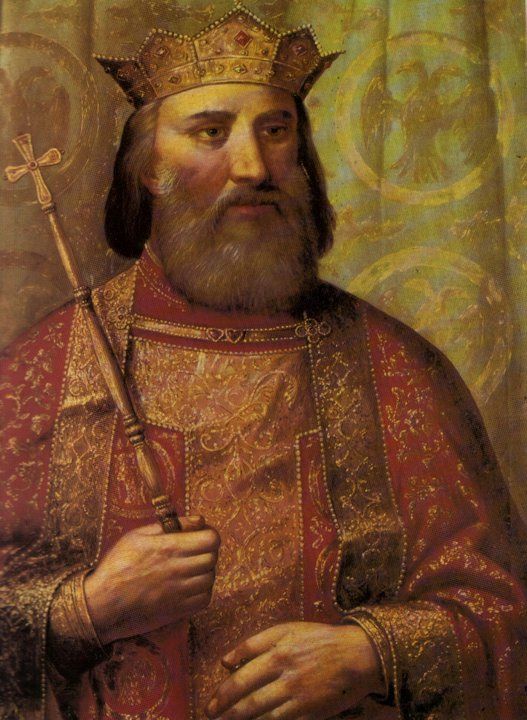The Battle of Kosovo in 1389, near today’s Priština, stands as a major event in medieval European history. Prince Lazar led the Serbian side with around 15,000 soldiers, while Sultan Murad I commanded an Ottoman force of roughly 25,000 men. The background to this battle was the increasing presence of the Ottoman Empire in the Balkans, which was setting its sights on Serbian territories.
In this blog post, we’ll explore two central questions: Who came out on top in the Battle of Kosovo, and how did Sultan Murad I meet his end? It’s significant to note that both leaders, Prince Lazar and Sultan Murad, lost their lives in this confrontation. Furthermore, Murad’s death remains a unique occurrence, being the sole instance in the 600-year span of the Ottoman Empire when a reigning sultan was fatally struck down on the battlefield.

Who Won the Battle of Kosovo?
The Battle of Kosovo, which holds a significant place in the annals of European history, often raises the question: Who truly emerged victorious? An essential aspect to consider when analyzing the outcome of the battle is the involvement of Bosnia’s King, Tvrtko, a key ally to Prince Lazar. Recognizing the gravity of the impending clash, King Tvrtko dispatched one of his magnates, Vlatko Vuković, along with several thousand troops, to aid Lazar. This reinforcement predominantly held the left flank during the confrontation.
The immediate aftermath of the battle saw proclamations of a Christian victory. These narratives gained traction across the Christian world. Critical to this assertion are two letters penned by King Tvrtko himself, addressed to Trogir and Florence, declaring the Christian triumph at Kosovo. Given the immediate timing of these letters post-battle and the stature of Tvrtko, they possess significant historical value. In his correspondence to the Trogir community on August 1, 1389, Tvrtko painted a vivid picture of the Christian victory. He described how the “arrogant son of Satan and his servant, the enemy of Christ’s name and all of mankind, and of the orthodox faith,” was defeated on the battlefield.
However, a comprehensive assessment suggests that the outcome at Kosovo was likely inconclusive. Following the assassination of Sultan Murad I, his son Bayezid swiftly eliminated his potential rival and brother, Yakub, prioritizing the consolidation of his rule and the Ottoman realm’s stability. Meanwhile, the Serbian forces, despite suffering considerable casualties, managed to withdraw.
From a long-term perspective, the advantage seems to tilt in favor of the Ottomans. The Principality of Serbia, under Lazar’s widow, soon acquiesced to becoming an Ottoman vassal. While Serbia, with its limited resources, struggled to rejuvenate its manpower, the Ottomans quickly replenished their ranks. Their military machine resumed its relentless march across the Balkans. The subsequent Ottoman advances underscored the empire’s resilience and highlighted Serbia’s vulnerabilities in the post-Kosovo landscape.
How Did Sultan Murat Lose His Life?
The death of Sultan Murat I during the Battle of Kosovo Field is one of the most intriguing moments in Ottoman history. Several narratives attempt to explain the circumstances of his demise, each offering its unique interpretations.

The letters of King Tvrtko, which are preserved only in the response of the Florentine commune to Tvrtko, it is describe how twelve Serbian nobles managed to break through enemy lines, bypassing camels tied together to form a defensive barrier, and bravely reached Murat’s tent. This correspondence highlights that one of these nobles was “especially fortunate” as he managed to “valiantly” stab the Sultan in the throat. This act was celebrated as a heroic deed.
However, subsequent sources have crafted the legend of Miloš Obilić, a knight slandered by his peers, who managed to assassinate the Sultan under the guise of a surrender, taking advantage of the soldiers’ inattention to carry out the unexpected act.
Early Ottoman sources cast this event in a different light. According to them, Murat was killed after the battle, and it was through deceit. It’s essential to note that these sources might have tried to diminish the Serbian knights’ heroic act by suggesting that the Sultan could only be killed by trickery, not in direct combat.
Reflecting on the strategy the Serbian army might have employed, the tactics adopted by Prince Lazar’s son, Stefan Lazarević, cannot be overlooked. This tactic mirrored that of Alexander the Great, focusing on a concentrated attack at the enemy’s formation center, especially targeting the ruler. It’s well-known that Alexander the Great often used this tactic to weaken the enemy’s morale and sway the battle in his favor.
Given the available sources and historical parallels, the most likely assumption is that a group of Serbian knights indeed launched a daring assault on the Turkish camp with the intent of eliminating the Sultan. This brave strategy, which leaned on a direct attack on the enemy leader, remains a defining feature of military tactics of that era and undoubtedly played a role in the significant event during the Battle of Kosovo.
Conclusion
The historical accounts surrounding the Battle of Kosovo and the death of Sultan Murat I are a matter of debate among historians. While the legend of Miloš Obilić is widely known in Serbian folklore, concrete evidence of the exact sequence of events is scarce, making it a blend of both historical facts and myths. The battle’s aftermath saw both sides claim victory, though in the long run, the Ottoman Empire’s influence continued to grow in the Balkans.
Historical Challenge: Can You Conquer the Past?
Answer more than 18 questions correctly, and you will win a copy of History Chronicles Magazine Vol 1! Take our interactive history quiz now and put your knowledge to the test!

